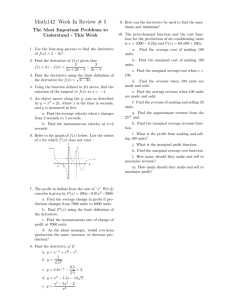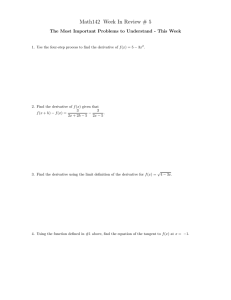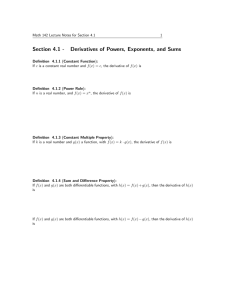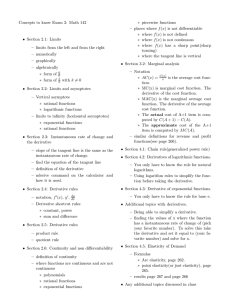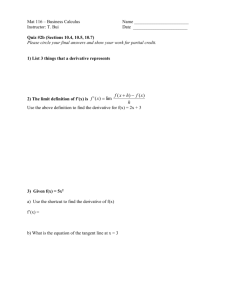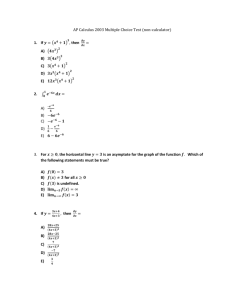Concepts to know Exam 2: Math 142 • Elasticity of Demand
advertisement
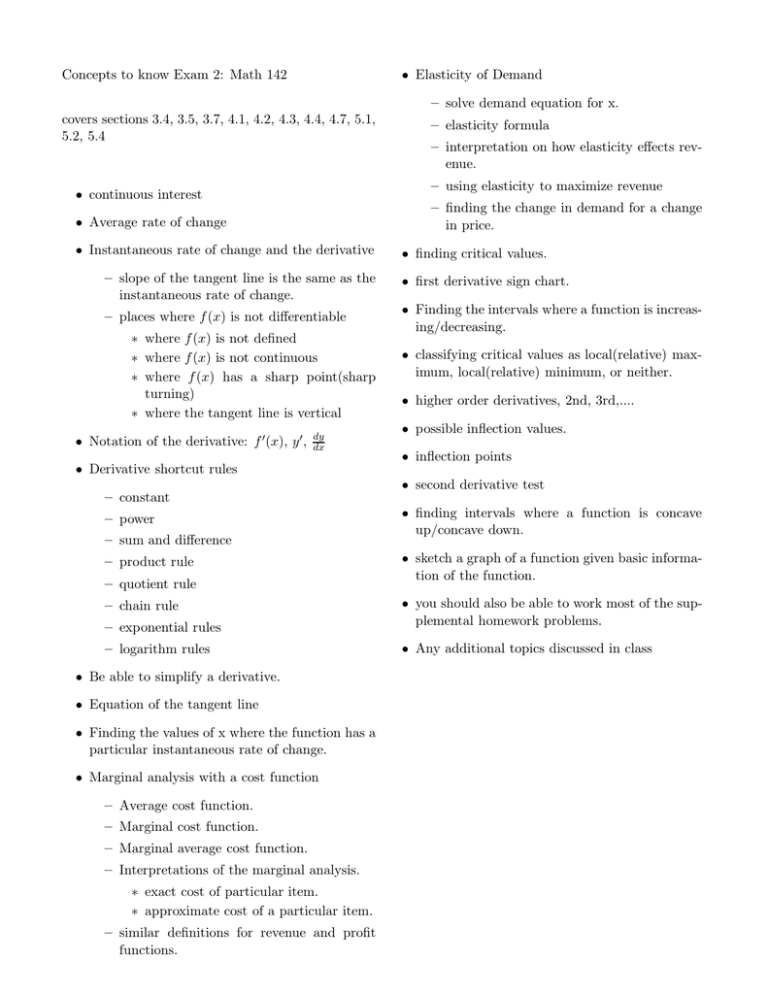
Concepts to know Exam 2: Math 142 • Elasticity of Demand – solve demand equation for x. covers sections 3.4, 3.5, 3.7, 4.1, 4.2, 4.3, 4.4, 4.7, 5.1, 5.2, 5.4 – elasticity formula – interpretation on how elasticity effects revenue. – using elasticity to maximize revenue • continuous interest – finding the change in demand for a change in price. • Average rate of change • Instantaneous rate of change and the derivative • finding critical values. – slope of the tangent line is the same as the instantaneous rate of change. • first derivative sign chart. – places where f (x) is not differentiable • Finding the intervals where a function is increasing/decreasing. ∗ where f (x) is not defined ∗ where f (x) is not continuous ∗ where f (x) has a sharp point(sharp turning) ∗ where the tangent line is vertical • Notation of the derivative: f ′ (x), y ′ , dy dx • Derivative shortcut rules – constant – power – sum and difference – product rule – quotient rule – chain rule – exponential rules – logarithm rules • Be able to simplify a derivative. • Equation of the tangent line • Finding the values of x where the function has a particular instantaneous rate of change. • Marginal analysis with a cost function – Average cost function. – Marginal cost function. – Marginal average cost function. – Interpretations of the marginal analysis. ∗ exact cost of particular item. ∗ approximate cost of a particular item. – similar definitions for revenue and profit functions. • classifying critical values as local(relative) maximum, local(relative) minimum, or neither. • higher order derivatives, 2nd, 3rd,.... • possible inflection values. • inflection points • second derivative test • finding intervals where a function is concave up/concave down. • sketch a graph of a function given basic information of the function. • you should also be able to work most of the supplemental homework problems. • Any additional topics discussed in class





